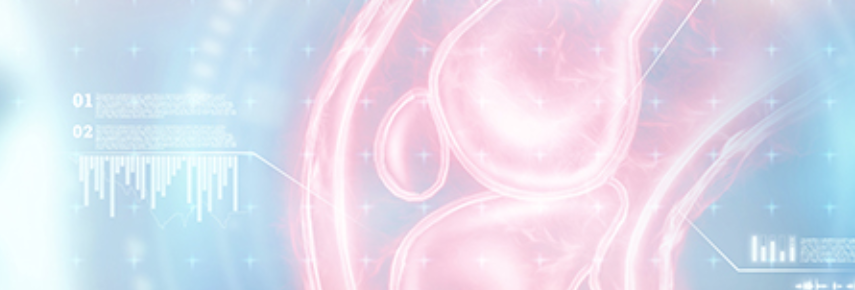Ann-Christin Klemenz, Linda Reichardt, Margarita Gorodezky, Mathias Manzke, Xucheng Zhu, Antonia Dalmer, Roberto Lorbeer, Cajetan I Lang, Marc-André Weber, Felix G Meinel
{"title":"利用基于深度学习的图像重构技术加速心脏磁共振成像(Cine Imaging)。","authors":"Ann-Christin Klemenz, Linda Reichardt, Margarita Gorodezky, Mathias Manzke, Xucheng Zhu, Antonia Dalmer, Roberto Lorbeer, Cajetan I Lang, Marc-André Weber, Felix G Meinel","doi":"10.1148/ryct.230419","DOIUrl":null,"url":null,"abstract":"<p><p>Purpose To assess the influence of deep learning (DL)-based image reconstruction on acquisition time, volumetric results, and image quality of cine sequences in cardiac MRI. Materials and Methods This prospective study (performed from January 2023 to March 2023) included 55 healthy volunteers who underwent a noncontrast cardiac MRI examination at 1.5 T. Short-axis stack DL cine sequences of the left ventricle (LV) were performed over one (1RR), three (3RR), and six cardiac (6RR) cycles and compared with a standard cine sequence (without DL, performed over 10-12 cardiac cycles) in regard to acquisition time, subjective image quality, edge sharpness, and volumetric results. Results Total acquisition time (median) for a short-axis stack was 47 seconds for the 1RR cine, 108 seconds for 3RR cine, 184 seconds for 6RR cine, and 227 seconds for the standard sequence. Volumetric results showed no difference for the conventional cine (median LV ejection fraction [EF] 63%), 6RR cine (median LVEF, 62%), and 3RR cine (median LVEF, 61%). The 1RR cine sequence significantly underestimated EF (57%) because of a different segmentation of the papillary muscles. Subjective image quality (<i>P</i> = .37) and edge sharpness (<i>P</i> = .06) of the three-heartbeat DL cine did not differ from the reference standard, while both metrics were lower for single-heartbeat DL cine and higher for six-heartbeat DL cine. Conclusion For DL-based cine sequences, acquisition over three cardiac cycles appears to be the optimal compromise, with no evidence of differences in image quality, edge sharpness, and volumetric results, but with a greater than 50% reduced acquisition time compared with the reference sequence. <b>Keywords:</b> MR Imaging, Cardiac, Heart, Technical Aspects, Cardiac MRI, Deep Learning, Clinical Imaging, Accelerated Imaging <i>Supplemental material is available for this article.</i> © RSNA, 2024.</p>","PeriodicalId":21168,"journal":{"name":"Radiology. Cardiothoracic imaging","volume":"6 6","pages":"e230419"},"PeriodicalIF":4.2000,"publicationDate":"2024-12-01","publicationTypes":"Journal Article","fieldsOfStudy":null,"isOpenAccess":false,"openAccessPdf":"https://www.ncbi.nlm.nih.gov/pmc/articles/PMC11683685/pdf/","citationCount":"0","resultStr":"{\"title\":\"Accelerated Cardiac MRI with Deep Learning-based Image Reconstruction for Cine Imaging.\",\"authors\":\"Ann-Christin Klemenz, Linda Reichardt, Margarita Gorodezky, Mathias Manzke, Xucheng Zhu, Antonia Dalmer, Roberto Lorbeer, Cajetan I Lang, Marc-André Weber, Felix G Meinel\",\"doi\":\"10.1148/ryct.230419\",\"DOIUrl\":null,\"url\":null,\"abstract\":\"<p><p>Purpose To assess the influence of deep learning (DL)-based image reconstruction on acquisition time, volumetric results, and image quality of cine sequences in cardiac MRI. Materials and Methods This prospective study (performed from January 2023 to March 2023) included 55 healthy volunteers who underwent a noncontrast cardiac MRI examination at 1.5 T. Short-axis stack DL cine sequences of the left ventricle (LV) were performed over one (1RR), three (3RR), and six cardiac (6RR) cycles and compared with a standard cine sequence (without DL, performed over 10-12 cardiac cycles) in regard to acquisition time, subjective image quality, edge sharpness, and volumetric results. Results Total acquisition time (median) for a short-axis stack was 47 seconds for the 1RR cine, 108 seconds for 3RR cine, 184 seconds for 6RR cine, and 227 seconds for the standard sequence. Volumetric results showed no difference for the conventional cine (median LV ejection fraction [EF] 63%), 6RR cine (median LVEF, 62%), and 3RR cine (median LVEF, 61%). The 1RR cine sequence significantly underestimated EF (57%) because of a different segmentation of the papillary muscles. Subjective image quality (<i>P</i> = .37) and edge sharpness (<i>P</i> = .06) of the three-heartbeat DL cine did not differ from the reference standard, while both metrics were lower for single-heartbeat DL cine and higher for six-heartbeat DL cine. Conclusion For DL-based cine sequences, acquisition over three cardiac cycles appears to be the optimal compromise, with no evidence of differences in image quality, edge sharpness, and volumetric results, but with a greater than 50% reduced acquisition time compared with the reference sequence. <b>Keywords:</b> MR Imaging, Cardiac, Heart, Technical Aspects, Cardiac MRI, Deep Learning, Clinical Imaging, Accelerated Imaging <i>Supplemental material is available for this article.</i> © RSNA, 2024.</p>\",\"PeriodicalId\":21168,\"journal\":{\"name\":\"Radiology. Cardiothoracic imaging\",\"volume\":\"6 6\",\"pages\":\"e230419\"},\"PeriodicalIF\":4.2000,\"publicationDate\":\"2024-12-01\",\"publicationTypes\":\"Journal Article\",\"fieldsOfStudy\":null,\"isOpenAccess\":false,\"openAccessPdf\":\"https://www.ncbi.nlm.nih.gov/pmc/articles/PMC11683685/pdf/\",\"citationCount\":\"0\",\"resultStr\":null,\"platform\":\"Semanticscholar\",\"paperid\":null,\"PeriodicalName\":\"Radiology. Cardiothoracic imaging\",\"FirstCategoryId\":\"1085\",\"ListUrlMain\":\"https://doi.org/10.1148/ryct.230419\",\"RegionNum\":0,\"RegionCategory\":null,\"ArticlePicture\":[],\"TitleCN\":null,\"AbstractTextCN\":null,\"PMCID\":null,\"EPubDate\":\"\",\"PubModel\":\"\",\"JCR\":\"Q1\",\"JCRName\":\"RADIOLOGY, NUCLEAR MEDICINE & MEDICAL IMAGING\",\"Score\":null,\"Total\":0}","platform":"Semanticscholar","paperid":null,"PeriodicalName":"Radiology. Cardiothoracic imaging","FirstCategoryId":"1085","ListUrlMain":"https://doi.org/10.1148/ryct.230419","RegionNum":0,"RegionCategory":null,"ArticlePicture":[],"TitleCN":null,"AbstractTextCN":null,"PMCID":null,"EPubDate":"","PubModel":"","JCR":"Q1","JCRName":"RADIOLOGY, NUCLEAR MEDICINE & MEDICAL IMAGING","Score":null,"Total":0}
引用次数: 0

 求助内容:
求助内容: 应助结果提醒方式:
应助结果提醒方式:


